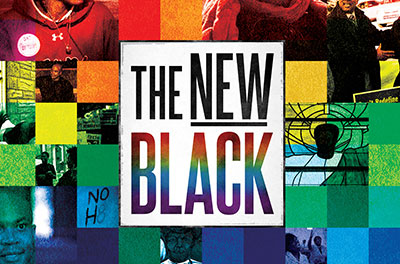
Get Educated About Educational Distribution:
Part 1 of a 3-part Series
by Orly Ravid, Founder, The Film Collaborative
Orly Ravid is an entertainment attorney at Mitchell Silberberg & Knupp (MSK) and the founder of The Film Collaborative with 15-years of film industry experience in acquisitions, festival programming, sales, distribution/business affairs, and blogging and advising. She also contributed to the Sundance Artist Services initiative.

Filmmakers usually think selling their film to distributors means that they will handle the whole release including theatrical, home video, and of course now digital/VOD. One category of distribution that is often overlooked, or not fully understood, however, is educational distribution. It can be a critical class of distribution for certain films, both in terms of reaching wider audiences and making additional revenue. For a certain type of film, educational distribution can be the biggest source of distribution revenue.
What is it?
When a film screens in a classroom, for campus instruction, or for any educational purpose in schools (K-university), for organizations (civic, religious, etc.), at museums or science centers or other institutions which are usually non-profits but they can be corporations too.
This is different from streaming a film via Netflix or Amazon or renting or buying a commercial DVD. Any film used for classes / campus instruction / educational purposes is a part of educational distribution and must be licensed legally. Simply exhibiting an entire film off of a consumer DVD or streaming it all from a Netflix or Amazon account to a class or group is not lawful without the licensor’s permission unless it meets certain criteria under the Copyright Act.
Initially, this was done via 16mm films, then various forms of video, and now streaming. These days, it can be selling the DVD (physical copy) to the institution/organization to keep in its library/collection, selling the streaming in perpetuity, renting out the film via DVD or streaming for a one-time screening, or exposing the content to view and at some point (certain number of views) it is deemed purchased (a/k/a the “Patron Acquisition Model”).
What type of films do well on the educational market?
In general, best selling films for educational distribution cover topics most relevant to contemporary campus life or evergreen issues such as: multiculturalism, black history, Hispanic studies, race issues, LGBTQ, World War II, women’s studies, sexual assault, and gun violence; in general films that cover social and political issues (international and national); health and disability (e.g. autism); and cinema and the arts. A great title with strong community appeal and solid perception of need in the academic community will do best (and the academic needs are different from typical consumer/commercial tastes).
At The Film Collaborative, we often notice that the films that do the best in this space sometimes do less well via commercial DVD and VOD. This is true of films with a more historic and academic and less commercial bent. Of course, sometimes films break out and do great across the board. Overall, the more exposure via film festivals, theatrical, and/or social media, the better potential for educational bookings though a film speaking directly to particular issues may also do very well in fulfilling academic needs.
Sourcing content
Across the board the companies doing educational distribution get their content from film festivals but also simply direct from the producers. Passion River and Kanopy, for example, note that film festival exhibition, awards, and theatrical help raise awareness of the film so films doing well on that front will generally perform better and faster but that does not mean that films that do not have a good festival run won’t perform well over time. Services such as Kanopy, Alexander Press, and Films Media Group collect libraries and get their films from all rights distributors and those with more of an educational distribution focus as well as direct from producers. These services have created their own platforms allowing librarians etc. to access content directly.

Windowing & Revenue
There are about 4,000 colleges in the US and about 132,000 schools, just to give you a sense of the breadth of outlets but one is also competing with huge libraries of films. Educational distributors such as ro*co films has a database of 30,000 buyers that have acquired at least one film and ro*co reached beyond its 30,000 base for organizations, institutions, and professors that might be aligned with a film. All rights distributors often take these rights and handle them either directly, through certain educational distribution services such as Alexander Press (publisher and distributor of multimedia content to the libraries worldwide), Films Media Group / Info Base (academic streaming service), or Kanopy (a global on-demand streaming video service for educational institutions), or a combination of both. There are also companies that focus on and are particularly known for educational distribution (even if they in some cases also handle other distribution) such as: Bullfrog Films (with focus on environmental), California Newsreel (African American / Social Justice), Frameline Distribution (LGBTQ), New Day Films (a filmmaker collective), Passion River (range of independent film/documentaries and it also handles consumer VOD and some DVD), roc*co films (educational distributor of several Sundance / high profile documentaries), Third World Newsreel (people of color / social justice), Women Make Movies (cinema by and about women and also covers consumer distribution), and Swank (doing educational/non-theatrical distribution for studios and other larger film distributors). Cinema Guild, First Run Features, Kino Lober, Strand, and Zeitgeist are a few all rights distributors who also focus on educational distribution.
Not every film has the same revenue potential from the same classes of distribution (i.e. some films are bound to do better on Cable VOD (documentaries usually do not do great that way). Some films are likely to do more consumer business via sales than rentals. Some do well theatrically and some not. So it is no surprise that distributors’ windowing decisions are based on where the film’s strongest revenue potential per distribution categories. Sometimes an educational distribution window becomes long and sales in that division will determine the film’s course of marketing. But if a film has a theatrical release, distributors have certain time restrictions relative to digital opportunities, so that often determines the windowing strategy, including how soon the film goes to home video.
The film being commercially available will limit the potential for educational distribution, and at the same time, the SVOD services may pay less for those rights if too much time goes by since the premiere. Hence it is critical to properly evaluate a film’s potential for each rights category.
Revenue ranges widely. On the one hand, some films may make just $1,000 a year or just $10,000 total from the services such as Kanopy and Alexander Street. On the other hand, Kanopy notes that a good film with a lot of awareness and relevance would be offered to stream to over 1,500 institutions in the US alone (totaling over 2,500 globally), retailing at $150/year per institution, over a 3-year period, and that film should be triggering about 25% – 50% of the 1,500 institutions. Licensors get 55% of that revenue. On average, a documentary with a smaller profile and more niche would trigger about 5-10% of the institutions over 3 years.
More extreme in the range, ro*co notes that its highest grossing film reached $1,000,000, but on average ro*co aims to sell about 500 educational licenses.
If the film has global appeal then it will do additional business outside the U.S. All rights and educational distributors comment that on average, good revenue is in the 5-figures range and tops out at $100,000 +/- over the life of the film for the most successful titles. The Film Collaborative, for example, can generate lower to mid 5-figures of revenue through universities as well (not including film festival or theatrical distribution). Bullfrog notes that these days $35,000 in royalties to licensors is the higher end, going down to $10,000 and as low as $3,000. For those with volume content, Alexander Street noted that a library of 100-125 titles could earn $750,000 in 3 years with most of the revenue being attributable to 20% of the content in that library. Tugg (non-theatrical (single screenings) & educational distribution) estimates $0-$10,000 on the low end, $10,000 – $75,000 in the mid-range, and $75,000 and above (can reach and exceed $100,000) on the high end. Factors that help get to the higher end include current topicality, mounting public awareness of the film or its subject(s), and speaking to already existing academic questions and interest. Tugg emphasizes the need for windowing noting the need for at least a 6-month window if exclusivity before the digital / home video release. First Run Features (an all-rights distributor that also handles educational distribution both directly and by licensing to services) had similar revenue estimates with low at below $5,000, mid-range being $25,000 – $50,000, and high also above $75,000.
Back to windowing and its impact on revenue—Bullfrog notes it used to not worry so much about Netflix and iTunes because they “didn’t think that conscientious librarians would consider Netflix a substitute for collection building, or that instructors would require their students to buy Netflix subscriptions, but [they] have been proved wrong. Some films are just so popular that they can withstand that kind of competition, but for many others it can kill the educational market pretty much stone dead.” Yet, theatrical release is usually not a problem, rather a benefit because of the publicity and awareness it generates.
Passion River explains that filmmakers should not be blinded by the sex appeal of VOD / digital distribution—those platforms (Amazon, Hulu, iTunes, Netflix) can and will wait for hotter films on their radar. An example Passion River offers is Race to Nowhere which sold to over 6,000 educational institutions by staying out of the consumer market for at least 3 years. This type of success in the educational space requires having the right contacts lists and doing the marketing. But I would say, consider the film, its revenue potential per rights category, the offers on-hand, and then decide accordingly.
Stay tuned for Parts 2 & 3, which will go into the nitty gritty details of educational distribution.
The legal information provided in this publication is general in nature and should not be construed as advice applicable to any particular individual, entity or situation. Except as otherwise noted, the views expressed in this publication are those of the author(s). This alert may be considered a solicitation for certain purposes.
Orly Ravid February 18th, 2016
Posted In: Distribution, education, Legal
Tags: Alexander Press, Amazon, Bullfrog Films, California Newsreel, Cinema Guild, classroom films, educational distribution for films, educational market for films, film distribution, film library, Films Media Group, First Run Features, Frameline Distribution, Kanopy, Kino Lorber, Netflix, New Day Films, Orly Ravid, Passion River, ro*co, Strand Releasing, The Film Collaborative, Third World Newsreel, Women Make Movies, Zeitgeist Films
TFC members found success and a broadcast deal for The New Black
This week’s member profile looks at the documentary The New Black, an examination of how the African-American community is grappling with gay rights issues and homophobia in the black community’s institutional pillar—the black church.
Producer Yvonne Welbon and director Yoruba Richen shared how The Film Collaborative helped them figure out the right distribution strategy for their film.
At what stage in the production process was TFC consulted?
“We reached out to TFC after completing the film, about a month before we premiered at the LA Film Festival in June 2013.”
What advice was sought from TFC and what ultimately happened with the release of the film? What results were achieved with TFC’s help?
“We sought a lot of advice from TFC. They were instrumental in helping us figure out our film festival strategy both domestically and internationally. To date, we have screened in over 50 film festivals around the world.
TFC was also helpful in figuring out distribution options. Orly Ravid provided consultation services in terms of figuring out the foreign market for our film. She helped us to be realistic in terms of what to expect because of the subject of our film. She was right. And each distributor who loved our film, but couldn’t distribute it, basically told us the story she prepared us to hear.
We finally received an offer and signed with Java Films. We had a limited theatrical release and the film will be broadcast on PBS’s Independent Lens. California Newsreel is our educational distributor and we release the film on VOD next year through Sundance Artists Services.”
Where can the film be seen now?
“The film is screening all over the country. Please check the website for more information. www.newblackfilm.com. Our broadcast debut on Independent Lens will be on June 15, 2014 at 10:30pm, following Masterpiece Theater. Also, educational institutions can buy the film from California Newsreel.”
Here is a peek at the trailer
Sheri Candler April 16th, 2014
Posted In: case studies, Distribution, Film Festivals
Tags: California Newsreel, Film Festivals, Independent Lens, Java Films, Los Angeles Film Festival, Sheri Candler, TFC member, The Film Collaborative, The New Black, Yoruba Richen, Yvonne Welbon
